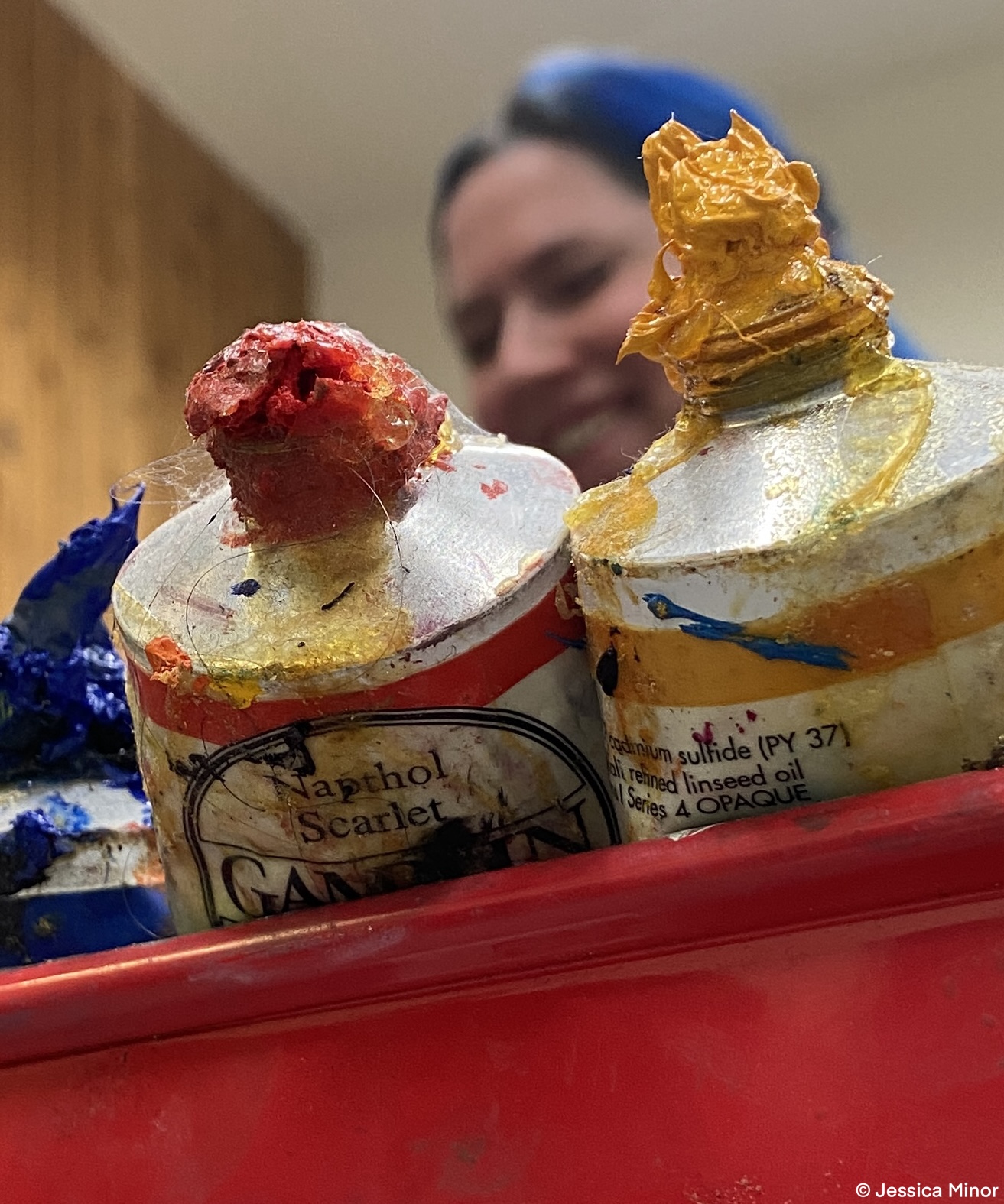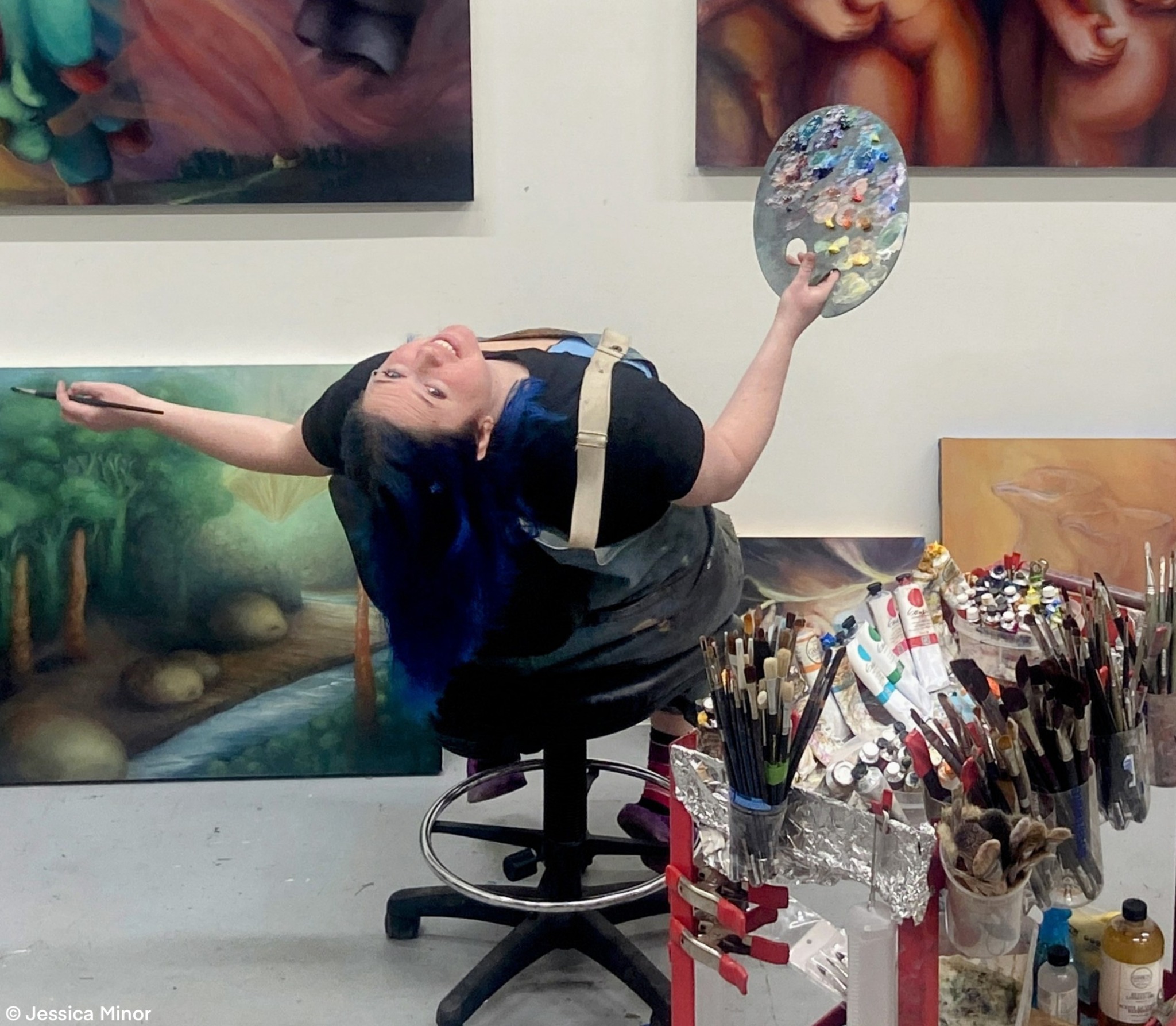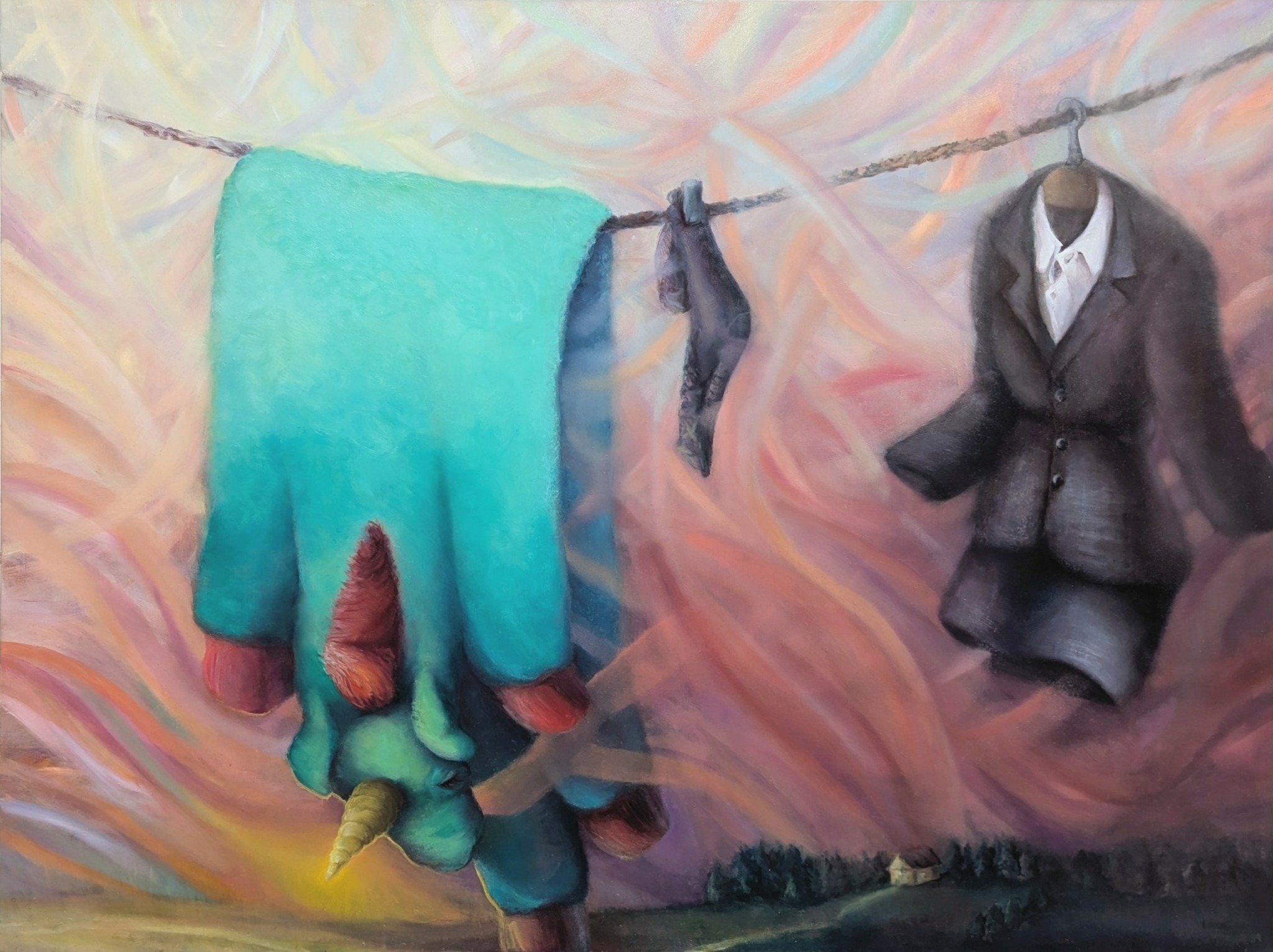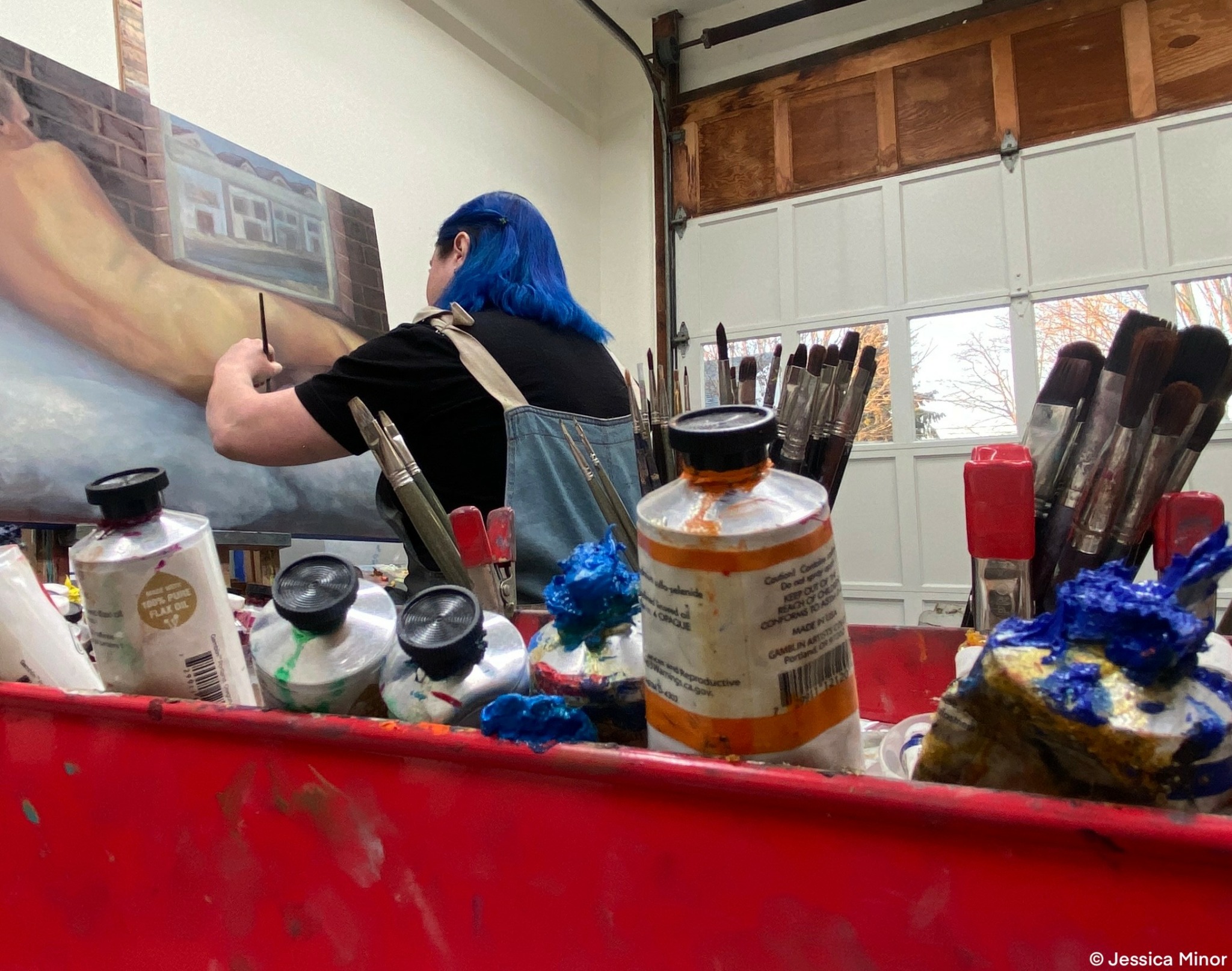We caught up with the brilliant and insightful Stefania Salles Bruins a few weeks ago and have shared our conversation below.
Alright, Stefania thanks for taking the time to share your stories and insights with us today. Has your work ever been misunderstood or mischaracterized?
Throughout my life I’ve felt misunderstood for being an artist and a lawyer. It’s as if society insists: pick one label, or risk being seen as a contradiction. The legal community often perceives art as a hobby even when it is someone’s full-time work; and from many artists’ perspective lawyers are discredited when pursuing the arts for not being “all-in”. Or at least, that’s been my experience.
At some point I was compelled to follow my passion for art under a pseudonym. That happened during a decade of practicing corporate law in NYC. The need for a pseudonym was driven by the relentless demands of a career that permits no time for personal development, and the way in which art—especially nudity therein—is perceived through a corporate lens. During the time that I introduced myself as Marie Sally outside of my legal practice, I was able to carve-out space to exist free from biases, creating and sharing my work without hesitation.
When I started the MFA program at the New York Academy of Art, I merged the two parts of my life, lawyer and artist, which felt liberating although challenging. The experience of using an alias for several years showed me that existing genuinely is more about personally embracing our individuality than it is about feeling understood. Nowadays, I have connected with other professionals throughout the country and internationally who combine a licensed practice with an artistic practice. They’ve inspired me not to give up. It turns out that an artist, even when cloaked by a gown or covered in scrubs, finds a way to make art.


Stefania, before we move on to more of these sorts of questions, can you take some time to bring our readers up to speed on you and what you do?
I am a figurative painter focused on narrative works and uncanny still lives, often infused with some humor and darkness. Balancing the line between the familiar and the strange, I combine elements of realism with surrealist compositions and a painterly style that interprets reality. My preferred medium is oil paint, diluted only with linseed oil; and I work on aluminum panels, which I cradle with handcrafted wooden frames. My work is united by its purpose – a study of the human condition through personal experience. The act of painting is a way of thinking for me. It allows me to grapple with questions that defy definitive answers. In the best moments, viewers join me in the inquiry, finding meaning the layers of paint.
Each painting allows me to explore truth, an underlying essence. The subject-matter forms a pictorial analogy for the rawness of being human, whether I’m exploring sacrifice through disembodied heads, vulnerability through butts, or revelations of self through nudity. For example, “Suits III” features a unicorn onesie, a G-string, and a suit on a clothing line over a stormy house on rolling hills. Our different roles – such as child or parent, employee, artist, lover, friend or stranger – are often reflected through attire, and I invite the viewer to consider their own daily costumes. Another painting from a still life series, “Apple of His Eye”, reimagines a portrait with “apple eyes”, “banana smile” and “melon breasts” – teasing at a reconsideration of how we perceive objects.
Recently, after experimenting with traditional methods of painting, I’ve reverted to relying on my imagination as a major part of my process. Although I often begin with sketches, my process is a dialogue with the artwork. Responding to the panel with brushstrokes, finger-blending, and wipe-outs, I treat the image as if it already exists and needs to be revealed. That way, the image forming on the panel guides me toward the painting it needs to become. Ultimately painting allows me to accept the transient nature of being. As objects, paintings transcend our impermanence by extending the lifespan of the messages embedded therein.


Is there something you think non-creatives will struggle to understand about your journey as a creative? Maybe you can provide some insight – you never know who might benefit from the enlightenment.
The journey as an artist is in stark contrast to the path of structured professions. When I became a lawyer, for example, I was following a predictable direction – schooling and credentials lead to a somewhat defined career. I see now that the journey of an artist has no set path; it must be discovered, unearthed, or forged. Balancing this pursuit of independence with the need for stability is different for everyone. We are all thrown into existence with a different set of opportunities, but it’s the decisions we make day to day that determine who we are. Many of the painters I admire had the courage to embrace uncertainty early on, carving their paths from scratch in service of their passion and talent. For me, it took time to recognize that I didn’t have to follow a prescribed path.
When I was a kid, conversations about artistic pursuit often focused on financial instability, underscoring them as risky or impractical. This point of view overlooks the importance of shaping our lives consistently with our dreams, a realization that drove me to work toward a painting career in my late thirties. I started living intentionally and viewing uncertainty as an opportunity for growth. Each step since then has been filled with unknowns but has felt rewarding. I like to think of wind shaping dunes—not forcing a path, just responding to the landscape. Being an artist isn’t just about making art; the job itself demands invention and adaptability. It turns out that an artist’s trajectory is per se artistic.

Can you tell us about a time you’ve had to pivot?
One significant pivot for me was leaving a General Counsel position to earn an MFA and concentrate on painting. It was a leap from financial stability toward artistic adventure. This was followed by relocating to a more affordable location and leaving NYC – the place where, as a Brazilian-Dutch immigrant, I found home. Although a major change like that might come across as abrupt, it was the result of a deliberate recalibration.
Pivoting began when I recognized that where we focus our energy becomes what we care about, and if we’re not mindful, we risk committing ourselves to pursuits that stray from our essence. At the time, I was financially stable but felt uncomfortable with how I was evolving as a person. So, I restructured my living by aligning my actions with what truly matters to me. It was less about abandoning one career for another and more about integrating my intentions toward becoming who I am. To me, pivoting is a series of choices. Each choice contributes toward shaping a life that feels meaningful, in the same way that individual brushstrokes gradually create an image.
Contact Info:
- Website: https://www.stefaniasallesbruins.com/
- Instagram: https://www.instagram.com/stefania.bruins/
- Linkedin: https://www.linkedin.com/in/stefaniasallesbruins/



Image Credits


